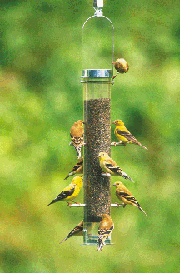|
Teaching Students About Backyard Conservation Backyard Conservation is a program of the Wildlife Habitat Council (WHC), Natural Resources Conservation Service (NRCS) and National Association of Conservation Districts (NACD) that teaches citizens how to improve water quality and provide habitat for wildlife using conservation techniques developed for farms. The Backyard Conservation education modules encourage students and their families to explore and investigate the fascinating natural world in our own backyards. Furthermore, the modules allow schools to utilize nearby natural areas as outdoor classrooms, reducing or eliminating the need for costly and time prohibitive field trips.
The Wildlife Habitat Council developed a database of community resources that can provide local expertise as you implement these lessons. These resources include federal agencies, such as the USDA NRCS, state agencies like Natural Heritage Programs, non-governmental organizations, including Native Plant Societies and sources to purchase native plants for restoration. The following provides a brief description of each lesson. Click on the lesson title to access the complete lesson. Elementary Lessons Grades 3 to 5 Visiting a Meadow Habitat: An Introduction to Field Study teaches students through inquiry about the importance of pollinators and their relationship with plants within a meadow ecosystem. Students observe the butterflies, bees, and other insects within a wildflower meadow, as well as the plants themselves. Hoptoad Habitats guides students through an exploration of amphibian habitats with a focus on vernal pools. Lessons are designed for the classroom and the field to empower students to take local action to protect wetland habitats. Middle School Lessons Grades 6 to 8 Growing Native allows students to explore native plant communities and the invasive species that compete with native plants. Students apply the knowledge learned about plants in the classroom to the field, engaging in ecological restoration. Backyard Conservation and Local Laws introduces students to the process of making laws that while reflecting community values may help or hinder backyard conservation efforts. The culminating activity for this lesson is a case study, which is decided through a mock city council hearing. High School Lessons Grades 9 to 12
|






